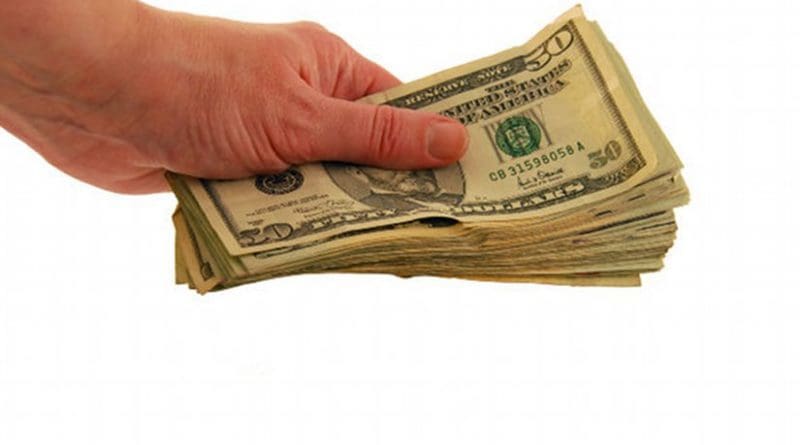Ralph Nader: Tens Of Billions Of Higher Interest Dollars Are Yours For The Asking – OpEd
By Ralph Nader
American bank customers are losing billions of dollars in higher interest payments because they’re not being “frugal shoppers” and making a telephone call or sending an email to compare interest rates. If they did, they would find out that the Federal Reserve’s three years of gradual interest rate increases have finally pushed the banks—traditional and online—to make ten times more in interest payments to savers than millions of bank customers are now receiving.
There are over ten trillion dollars in bank savings deposits and money market accounts at places like Fidelity or State Street. In the past four years, such institutions have been reluctant to pass on the benefits of higher interest rates to their trusting savers. However, about a year ago when the interest spread between what the interest banks charge borrowers and the interest banks pay savers became too glaring to ignore. Prodded by more competitive online banks, with little overhead, and by the widening spread between short-term CDs and plain savings accounts, modestly alert savers can collect up to 2.25 percent in interest on minimums of $25,000 or less, depending on the institution.
Example, one person I know was keeping about $100,000 of life savings in a local saving bank at the rate of .02 percent. This was an undisturbed nest egg for years. A conversation with a neighbor led her to call the bank and ask for a better deal. Sure enough, she didn’t know that she could get a 12 month CD paying 2.25 percent interest. (She opted for the better interest rate).
She didn’t know about the better offerings because her Bank, like most financial institutions, does not believe in affirmative action to inform their trusting customers of the better deals available to them. Consequently, inattentive Americans are literally leaving tens of billions of dollars on the table, which the banks happily scoop up into their record quarterly profit reports. The same is true for giant mutual funds like Fidelity that has historically lagged behind its more successful competitor, Vanguard.
Absent personal friendships, very few bank officials contact their savings depositors and tell them they can make thousands of dollars more a year in interest payments with similar accounts. Typical conditions associated with higher interest paying accounts include: maintaining a minimum balance, limiting savers to a few withdrawals a month, and tying up one’s money for several months or even a year. If you want to shop around online, you’ll find recent offerings by banks for a one year C.D. with no minimum deposit at a rate of 2.5 percent. Smart savers can ask their bank to match these rates. And with the Fed saying it will raise rates two more times this year alone, these deals are only going to get better.
Savings are federally insured by the FDIC up to $250,000 per account.
The worst interest rates are often from the giant banks—deemed too big to fail—that are flush with cash and enjoying lucrative tax breaks. They are staying put, offering ridiculous 0.01 percent to 0.02 percent interest rates. They won’t match smaller bank rates. In short, you’ve been given little more than a lock box.
One would think that national and local television and radio stations would leap to get more money so easily for their viewers and listeners. Well, banks and mutual funds advertise on these stations.
One would think that the federal and state bank regulatory agencies would inform consumers to be alert and check for the unnoticed available higher interest rate accounts. Maybe they’re too busy promoting banks, checking solvency indicators, and talking deregulation in the age of the Trumpsters (Trump likes to appoint deregulators straight from the banking industry).
We could take a lesson from video entrepreneurs like Eugene Jarecki, whose successful 2010 video “Move Your Money” urging customers to vote with their feet by leaving misbehaving banks for more reputable community banks or credit unions. (Mr. Jarecki is now busy promoting his new documentary, The King, on Elvis as a broad metaphor for Trump’s America, rampant materialism, and self-indulgence).
Large consumer organizations—such as Consumers Union (CU) with millions of subscribers and the Consumer Federation of America (CFA) with scores of institutional members, including consumer groups and unions, have a role to play. Come on CU and CFA—move some of the billions of retained bank dollars into higher interest rate payments for hard-pressed Americans. They and other middle class savers will thank you.
How about going full blast with eye catching news releases and social media? Add some dramatic news conferences and mass media interviews to make this a grand party of immediate benefits. Let’s go Marta Tellado (CU president) and Jack Gillis (CFA president)!!!! Why should the barons of finance keep laughing all the way to the bank?

